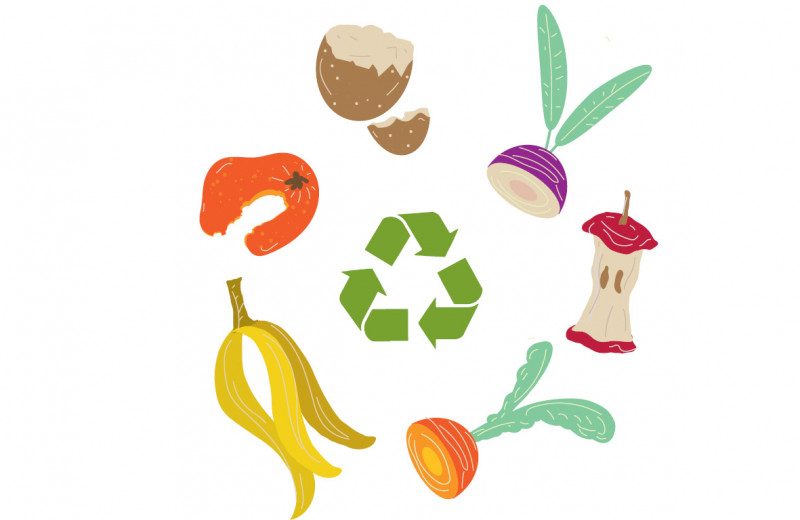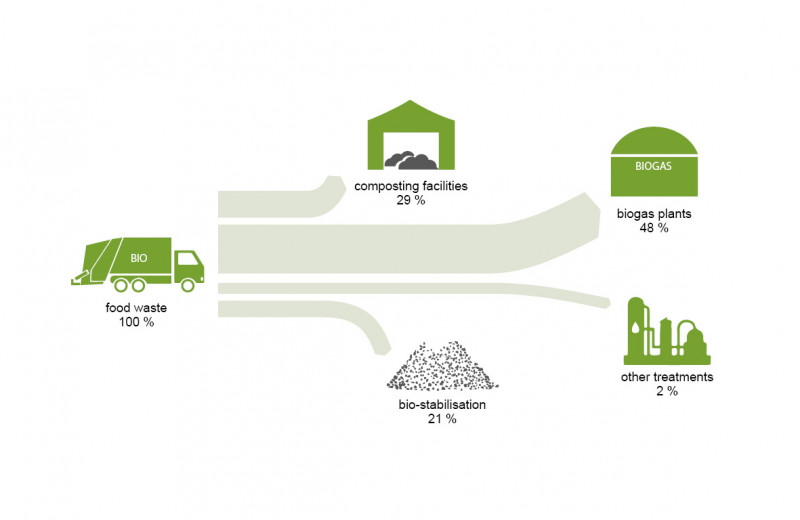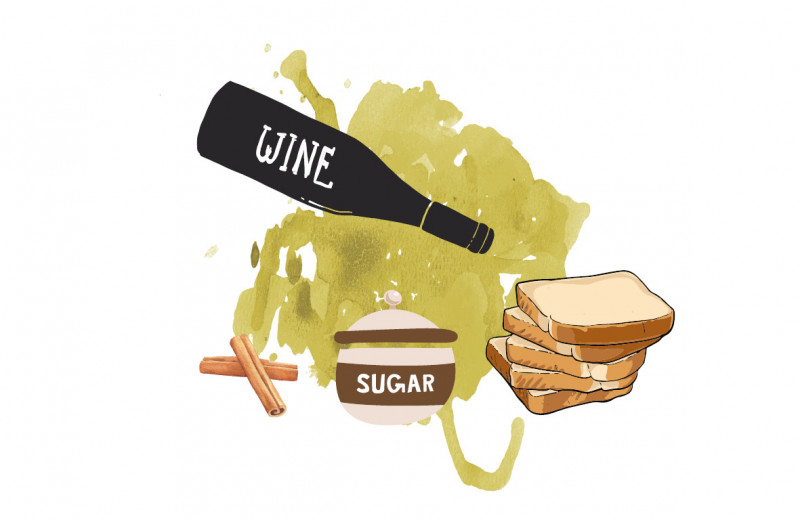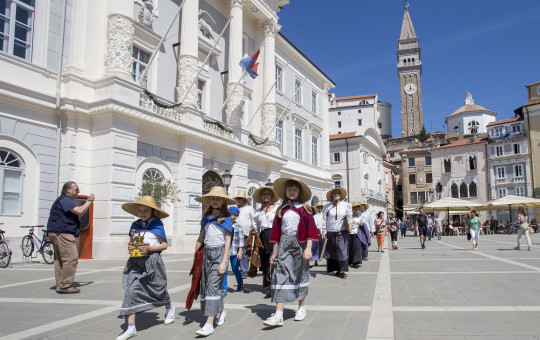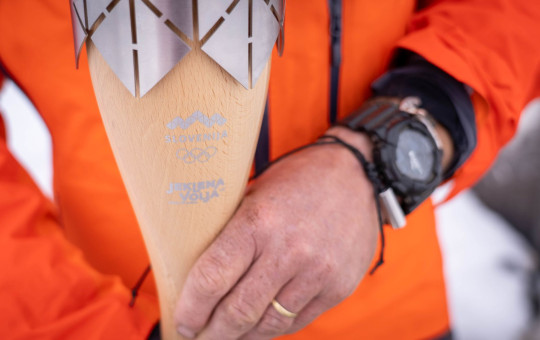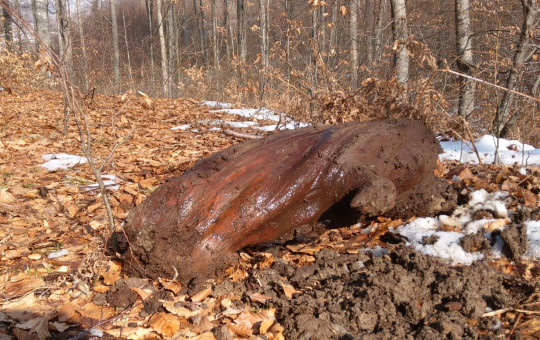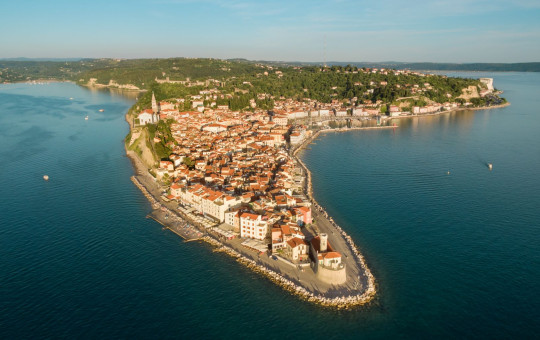Slovenia is increasing its level of municipal waste recycling despite the fact that more waste is generated each year. In 2018, almost 59 percent of waste was recycled; since 2010, the recycling rate has increased by as much as 35 percent. We are clearly very good at recycling, however, we still produce too much waste that will provide a challenge for our country and its population.
In 2018, Slovenia produced:
- A total of 1,563kg of all types of waste, except mineral (construction waste, soil and stones, dredging spoils, etc.), per capita. This is 10kg per capita more compared to 2017 but 456kg less than in 2010.
- A total of 495kg of municipal waste per capita. This is 17kg more than in 2017 and 26kg less than in 2010.
Food often winds up in the waste
Under the system of public collection of municipal waste, Slovenia separately collects bio-waste, which, in addition to kitchen food waste, also contains waste from gardens and parks. Between 2013 and 2015, the ratio of food in these bins averaged 39 percent per year.
In 2018, almost 139,900 tonnes of food waste was generated in Slovenia, which is an average of 68 kilogrammes per capita. This is slightly less than the average of 143,000 tonnes in recent years.
Almost half of all food waste is generated by households, although this proportion has been decreasing in recent years. In this respect, it should be noted that numerous households do not dispose of food waste through the waste management system, but compost it at home and then use the compost in their gardens.
Nearly 20 percent of food waste in Slovenia is generated by caterers and other businesses where food is served (such as kindergartens, schools, nursing homes and hospitals).
It is encouraging, however, that the amount of food waste in restaurants has begun to decline over the past three years. A tenth of food waste is generated due to improper storage, damage during transport or the expiry date.
Where does food waste end up?
The majority – almost half – of food waste is processed in biogas plants, i.e. anaerobically. Nearly a third goes to aerobic processing in composting facilities where Slovenia has sufficient capacities. The proportion of composted food is increasing year after year.
How do we work towards reducing food waste?
Each individual can contribute to reducing the amount of food waste as there are numerous opportunities at home for using food without discarding it.
Overripe fruit can be used for different compotes, jams or in pastries, while stale bread can be used to make breadcrumbs, bread dumplings or a dessert called "trijet". Here is a recipe.
Ingredients:
4 slices of stale bread
200ml of red or white wine, mixed with 50ml of water
a pinch of cinnamon
2 tablespoons of sugar
Preparation:
Briefly bake the thinly sliced stale bread in the oven.
Heat the wine and water mixture together with cinnamon and sugar, making sure it completely dissolves.
Arrange the baked bread slices on a plate and pour the lukewarm wine over them.
Enjoy!
Source: SURS
Date: 23. March 2020
Time to read: 4 min

